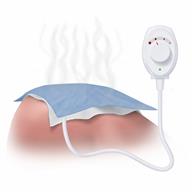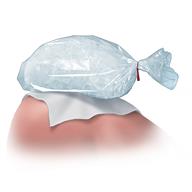Inflamed Joint After an Infection in the Body (Reactive Arthritis): What to Know
Reactive arthritis is swelling that makes a joint inflamed. It's caused by an infection somewhere else in your body. It often affects the knee, ankle, or foot joints.
Symptoms may last for several months and can come and go. In some cases, reactive arthritis can turn into a long-term problem.
What are the causes?
Reactive arthritis happens after you have an infection, often in areas like the stomach, genitals, or urinary tract. Infections that may cause it include:
Food poisoning from germs like salmonella, shigella, campylobacter, or yersinia.
A sexually transmitted infection (STI) like chlamydia.
The exact cause isn't known.
What increases the risk?
You're more likely to get reactive arthritis if:
Your chances of having long-term problems may go up if:
You have the HLA-B27 gene.
You get a lot of infections.
Someone else in your family has arthritis.
What are the signs or symptoms?
-
Pain and swelling in your joints, such as the joints in your knees, ankles, and feet.
-
Pain in your lower back, feet, or the area between your hip bones (pelvic area).
-
A low fever.
-
Pain when you pee, or peeing often.
-
Painful sores in your genitals.
-
Blurry eyesight, eye pain, and red, sore eyes. Your eyelids may stick together in the morning.
-
Sores in your mouth. These may or may not hurt.
How is this diagnosed?
You may be diagnosed based on your symptoms, medical history, and an exam. You may also have tests, such as:
Blood tests.
X-rays.
Pee tests.
How is this treated?

You may need to take medicines, such as:
Antibiotics. These can help treat the infection.
NSAIDs, such as ibuprofen. These can help with pain, swelling, and stiffness.
Shots of medicine. These can lessen irritation and swelling.
Disease-modifying medications like sulfasalazine or methotrexate. These can help with long-term symptoms. They may take a few weeks to work.
Immunosuppressants, which are medicines that weaken your immune system.
Symptoms such as skin sores or blurry eyesight often go away without medicines.
Follow these instructions at home:
Medicines
-
Take your medicines only as told.
-
If you were given antibiotics, take them as told. Do not stop taking them even if you start to feel better.
Managing pain, stiffness, and swelling
- Use ice or an ice pack as told.
-
Use heat as told.
- Use the heat source that your health care provider recommends, such as a moist heat pack or a heating pad. Do this as often as told.
-
If your skin turns red, take off the ice or heat right away to prevent skin damage. The risk of damage is higher if you can't feel pain, heat, or cold.
General instructions
Contact a health care provider if:
-
Your pain doesn't get better with medicine.
-
You have swelling or warmth in a joint that gets worse.
-
You have a fever.
-
You have eye pain or redness.
-
Your eyesight is blurry.
This symptom may be an emergency. Call 911 right away.
This information is not intended to replace advice given to you by your health care provider. Make sure you discuss any questions you have with your health care provider.
 You may need to take medicines, such as:
You may need to take medicines, such as:
